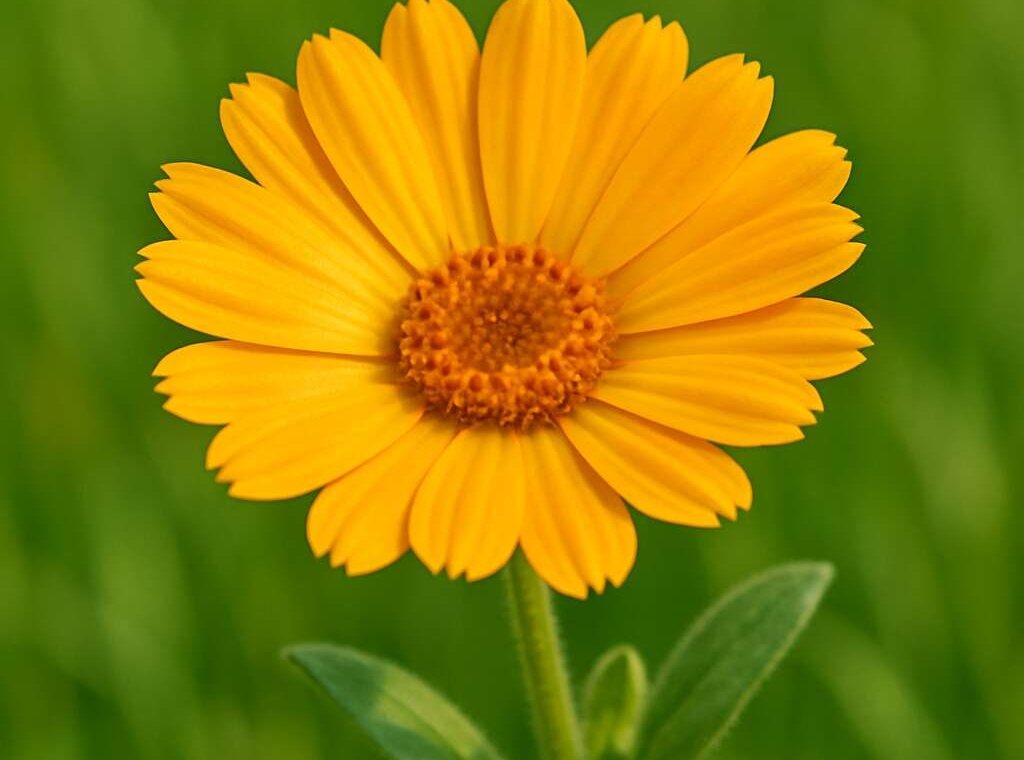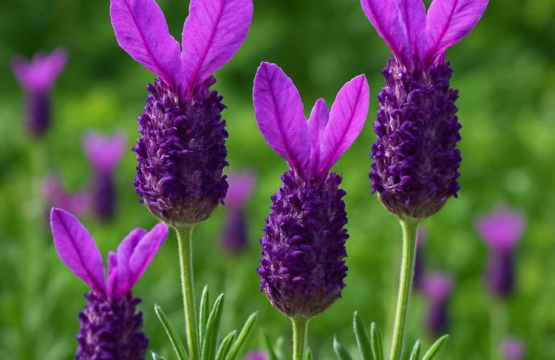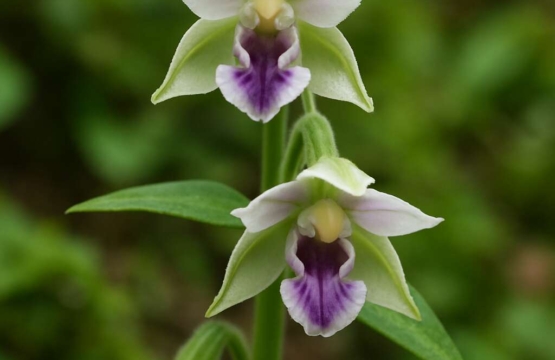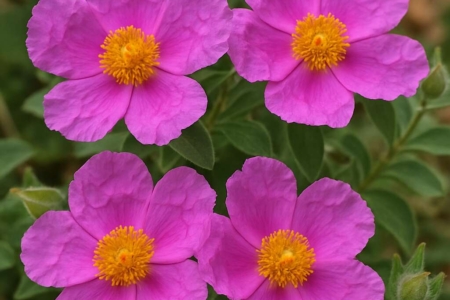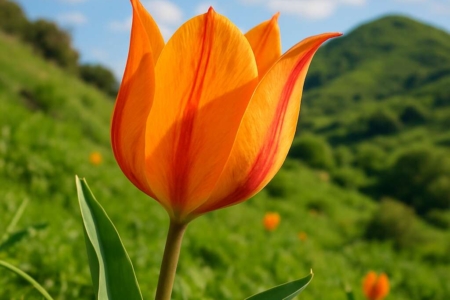Botanical Description and Taxonomy of Calendula arvensis
Scientific Classification – Genus, species, family details
In the shadowed corners of arid fields and neglected wastelands, the Field Marigold, known scientifically as Calendula arvensis, emerges like a whisper from the earth’s forgotten depths. Its botanical silhouette is a haunting blend of delicate yet resilient features, with slender stems that seem to pulse with an almost ghostly vitality. The flowers, small and vivid, bloom in clusters of fiery orange and yellow, a fleeting reminder of fleeting beauty amid desolation.
Taxonomically, Calendula arvensis resides within the expansive family of Asteraceae, a lineage known for its hardy, sun-loving members. Its genus, Calendula, is famed for its medicinal and ornamental qualities, but the species arvensis whispers a darker tale of survival in harsh terrains. The scientific classification is precise: it belongs to the genus Calendula, species arvensis, within the family Asteraceae. This classification unravels a story of evolutionary adaptation, where each lineage bears the scars of centuries, thriving in the shadows cast by more flamboyant flora.
- Genus: Calendula
- Species: arvensis
- Family: Asteraceae
Physical Characteristics – Flower appearance, foliage, size
Standing quietly in arid fields and neglected corners, the Field Marigold, scientifically known as Calendula arvensis, offers a rare glimpse into resilience and understated beauty. Its botanical presentation is both delicate and hardy, a testament to its survival in challenging environments. The plant typically reaches a modest height, often no more than 30 centimetres, but its true charm lies in its intricate floral display.
The flowers of Calendula arvensis are small yet striking, blooming in dense clusters of fiery orange and vibrant yellow. Each blossom features multiple narrow petals that radiate outward, creating a starburst effect that captures the eye in fleeting bursts of colour. The foliage is fine-textured, with narrow, grey-green leaves that seem almost whisper-like, providing a perfect contrast to the fiery blooms.
Within the taxonomy of Calendula arvensis, the genus Calendula is renowned for its ornamental and medicinal qualities, yet this particular species whispers tales of enduring in tough terrains. Its physical characteristics reflect an evolutionary mastery—small, resilient, and fiercely adaptive. To understand its botanical essence is to appreciate the subtle strength that allows Field Marigold to flourish amidst adversity.
Native Range and Habitat – Geographical distribution, preferred growing conditions
At first glance, the botanical description of Field Marigold, Calendula arvensis, reveals a plant that embodies resilience through its subtle yet striking features. This hardy annual typically stands no taller than 30 centimetres, but what it lacks in stature, it more than makes up for with its intricate floral display. The tiny, starburst-like flowers bloom in dense clusters of fiery orange and sunny yellow, radiating a sense of vibrant defiance amid arid landscapes. The fine, grey-green foliage offers a delicate contrast, almost whisper-like in its gentle texture, highlighting the plant’s understated beauty.
As part of the genus Calendula, the Field Marigold belongs to a family renowned for both ornamental appeal and medicinal virtues. Its taxonomy places it among plants that have adapted to thrive in challenging environments, whispering tales of endurance. This species’ evolutionary mastery lies in its ability to flourish in tough terrains, making it a symbol of perseverance in the plant kingdom.
Native to the Mediterranean basin and North Africa, Calendula arvensis has a broad geographical distribution that extends into parts of Southern Europe and the Middle East. It prefers growing conditions that mimic its natural habitat: well-drained, sandy or rocky soils, with full sun exposure. This hardy plant can often be found sprouting in neglected corners, arid fields, and wastelands where few other plants dare to survive. Its adaptability and resilience make it an invaluable element of native flora, especially in regions where drought and poor soil quality challenge lesser species.
- Arid and semi-arid regions
- Open fields and disturbed soils
- Areas with poor, sandy, or rocky substrates
Despite its modest appearance, Calendula arvensis continues to captivate those who seek the beauty of nature’s resilience. Its natural habitat and preferred growing conditions underscore the plant’s remarkable ability to endure where others cannot, making the Field Marigold a true emblem of tenacity in the wild. Such qualities not only define its physical presence but also deepen our appreciation for its role in the landscape of tough terrains.
Plant Lifecycle – Annual, perennial, or biennial information
Remarkably resilient, Calendula arvensis, commonly known as the Field Marigold, boasts a botanical description that reflects its hardy nature. This small but striking annual plant typically reaches a modest height of around 30 centimetres, yet it commands attention through its densely packed clusters of fiery orange and sunny yellow flowers. The delicate, star-shaped blooms seem to burst with colour, standing out vividly against the fine, grey-green foliage that whispers softly in the breeze. Its appearance captures the essence of survival amid harsh conditions, making each flower a testament to nature’s tenacity.
In terms of taxonomy, the Field Marigold belongs to the genus Calendula within the Asteraceae family, a group celebrated for both ornamental beauty and medicinal virtues. Its evolutionary adaptability is evident in its capacity to flourish in challenging environments, thriving where others might falter. The plant’s resilience is reflected in its ability to grow in a variety of tough terrains, from arid fields to rocky wastelands, cementing its status as a symbol of endurance.
Understanding the lifecycle of Calendula arvensis reveals why it is predominantly an annual species. It completes its growth cycle within a single season, sprouting from seed, flowering, and setting seed all in one year. This rapid lifecycle allows it to colonise disturbed soils and open fields swiftly, often sprouting in neglected corners where soil quality may be poor. The plant’s ability to produce abundant seeds ensures its persistence in its native habitat, ready to re-emerge with the next season’s warmth and sunlight. Interestingly, despite its classification as an annual, some populations may behave as biennials under specific conditions, especially in regions where environmental cues are less consistent.
- Seed germination occurs in early spring, often triggered by the warming soil.
- The plant quickly establishes a low, bushy form with fine foliage as it prepares to bloom.
- Flowering typically peaks in late spring to early summer, showcasing the vivid colours that make the Field Marigold so captivating.
- Seed production follows, with dispersal aided by wind and animals, ensuring the plant’s ongoing presence in its native habitat.
This lifecycle pattern underscores the plant’s role as a pioneer species, constantly ready to reassert itself in the face of adversity. The hardy nature of Calendula arvensis not only exemplifies botanical resilience but also enriches the landscape with a vibrant splash of colour in the most unlikely places. Such qualities make the Field Marigold a fascinating subject for those who cherish the quiet strength of nature’s survivors.
Cultivation and Growth of Field Marigold
Growing Conditions – Soil type, sunlight, watering needs
In the grand theatre of cultivation, the Field Marigold (Calendula arvensis) is surprisingly accommodating — almost like that one friend who’s easy to please. This hardy little plant thrives in well-drained, sandy or loamy soils that mimic its native European and North African habitats. It’s not particularly fussy about soil fertility, but a touch of organic matter never hurts to give it that extra boost. When it comes to sunlight, don’t skimp; full sun is the secret sauce for vibrant blooms that dazzle with their sunny petals.
Watering needs are modest — just enough to keep the soil barely moist. Overwatering can lead to root rot, which is about as welcome as a rainstorm during a picnic. For optimal growth, consider planting your Field Marigold in a spot where it can soak up at least six hours of direct sunlight daily. This resilient plant isn’t a diva; it tolerates a range of conditions but truly flourishes with consistent warmth and adequate light.
- Choose a sunny, open site with well-drained soil.
- Avoid overly rich or waterlogged soil to prevent fungal issues.
- Maintain a regular watering schedule, but steer clear of drowning the roots.
Propagation Methods – Seeds, cuttings, transplanting tips
Growing Field Marigold (Calendula arvensis) is surprisingly straightforward, making it a favourite among both novice and seasoned gardeners. Propagation primarily relies on seeds, which are quick to germinate and adapt well to various conditions. For best results, sow the seeds directly into well-prepared soil in early spring, ensuring the site receives full sun. Cover the seeds lightly with soil and keep the area moist but not waterlogged. Within a few weeks, seedlings will emerge, ready to add vibrant colour to your garden.
If you prefer to start indoors, sow the seeds in pots and transplant once seedlings are sturdy enough. When transplanting, choose a spot with well-drained soil and ample sunlight. Transplanting too early or into overly rich soil can hinder growth, so patience pays off. For cuttings, it’s best to take them in late summer; however, seed propagation remains the most reliable method for cultivating healthy, resilient Field Marigold (Calendula arvensis).
Care and Maintenance – Pruning, fertilization, pest control
Understanding the subtleties of cultivating Field Marigold (Calendula arvensis) reveals a delicate dance between nature’s resilience and human stewardship. This vibrant annual, with its fiery blooms and hardy disposition, demands attentive care that honours its innate vigour. Regular pruning, for instance, not only encourages lush, bushy growth but also prolongs flowering—removing spent flowers prevents seed formation and stimulates fresh blooms, keeping your garden alive with colour.
Fertilisation plays a subtle yet vital role; a balanced, organic feed once a month supplies necessary nutrients without overwhelming the plant’s natural charm. Pest control requires vigilance—common pests like aphids and whiteflies can be deterred with gentle, eco-friendly measures, ensuring the health of your Field Marigold (Calendula arvensis) remains uncompromised. For optimal growth, consider the following:
- Regularly inspect for pests and signs of disease.
- Prune to shape and promote vigorous flowering.
- Feed with a suitable organic fertiliser during active growth phases.
With these practices, this resilient flower not only survives but thrives, turning your garden into a tapestry of golden brilliance—an enduring testament to the art of cultivation and the subtle power of attentive care in nurturing the promise of Calendula arvensis.
Seasonal Growth Timeline – Planting, flowering, harvesting periods
The life cycle of Field Marigold (Calendula arvensis) is a testament to nature’s resilience and the changing seasons. This vibrant annual begins its journey in early spring, when the first gentle warmth awakens its tender shoots. As days lengthen and sunlight intensifies, the plant swiftly develops its distinctive fiery blooms, typically between April and June, filling fields and roadside verges with colour and energy.
During the peak flowering period, which usually spans from late spring to early summer, the bright yellow-orange flowers attract pollinators and bring a lively vibrancy to any garden or wild landscape. Harvesting can be carried out from late June through July, when the flowers are at their fullest and most vibrant. The flowering phase is crucial for seed collection, ensuring the propagation of this hardy species for the following season.
Understanding the seasonal growth timeline of Field Marigold (Calendula arvensis) allows gardeners to align their cultivation practices perfectly. From seed sowing in early spring to the final blooms of mid-summer, each stage of growth embodies the plant’s robust adaptability and colourful charm—an enduring symbol of nature’s unyielding beauty in the changing seasons.
Medicinal and Therapeutic Uses of Calendula arvensis
Traditional Remedies – Historical uses in herbal medicine
Historically, Field Marigold (Calendula arvensis) has earned a revered place in traditional remedies, treasured for its versatile medicinal properties. Its vibrant blossoms, often overlooked in the wild, have long been prized by herbalists for treating a variety of ailments. Ancient cultures harnessed the potency of Calendula arvensis to soothe skin irritations, heal wounds, and alleviate inflammation.
In folk medicine, extracts from the plant were commonly applied topically to reduce swelling and promote tissue regeneration. The plant’s anti-inflammatory and antiseptic qualities made it a trusted remedy for cuts, burns, and rashes. Some traditional healers even used it as a digestive aid, believing that the herbal infusion could help settle stomach disturbances.
The enduring legacy of Field Marigold (Calendula arvensis) in herbal medicine is a testament to its natural healing virtues, cherished by generations seeking gentle, plant-based therapies.
Current Medical Research – Scientific studies and findings
Recent scientific investigations affirm the remarkable therapeutic potential of Field Marigold (Calendula arvensis), revealing a spectrum of medicinal properties that continue to captivate researchers. Modern studies highlight its rich phytochemical profile, including flavonoids and triterpenoids, which contribute to its potent anti-inflammatory and antimicrobial effects. These compounds support the plant’s traditional reputation as a natural remedy for skin ailments and wound healing.
Emerging evidence suggests that extracts from Calendula arvensis can accelerate tissue regeneration and reduce inflammation, making it a promising candidate in contemporary herbal medicine. Notably, some studies have demonstrated its efficacy in managing minor burns, cuts, and dermatitis. Its antiseptic qualities are especially valued in reducing infection risk, aligning with ancient practices but now reinforced by scientific validation.
In addition to topical applications, preliminary research explores its potential in alleviating gastrointestinal discomfort, echoing age-old folk remedies. As interest in plant-based therapies grows, Field Marigold (Calendula arvensis) stands out as a natural, versatile ally in holistic health, bridging the wisdom of tradition with the rigor of scientific inquiry.
Skin and Wound Care – Uses in treating cuts, burns, skin irritations
Field Marigold (Calendula arvensis) has long been celebrated for its remarkable medicinal and therapeutic applications, especially in skin and wound care. Its vibrant, daisy-like flowers are more than just eye-catching; they are packed with bioactive compounds that bolster the plant’s healing properties. Modern research continues to uncover how extracts from Calendula arvensis can play a pivotal role in soothing skin irritations and accelerating tissue regeneration.
Traditionally, Field Marigold has been used to treat cuts, burns, and various skin inflammations. Its natural antiseptic qualities help to reduce infection risk while promoting faster healing. Applying Calendula arvensis-based preparations can provide relief from dermatitis and minor abrasions, nurturing the skin back to health with minimal scarring. The plant’s anti-inflammatory effects are particularly beneficial for calming redness and swelling caused by skin irritations.
In herbal medicine, Calendula arvensis is recognised for its ability to support the skin’s natural healing process. Whether used as an infused oil, ointment, or poultice, its therapeutic benefits remain consistent. For those seeking a natural remedy rooted in centuries of tradition and now validated by scientific insight, Field Marigold offers a promising option. Its versatility makes it an indispensable element in holistic skin care regimens, bridging ancient wisdom with contemporary medicinal standards.
Potential Health Benefits – Anti-inflammatory, antimicrobial properties
Field Marigold, scientifically known as Calendula arvensis, is a plant whose medicinal potential extends far beyond its vibrant blooms. Renowned for its anti-inflammatory and antimicrobial properties, this hardy herb has been a vital component of traditional herbal medicine for centuries. Modern scientific research continues to validate its ability to combat infections and soothe inflamed tissues, making Calendula arvensis a powerhouse in natural healing.
The plant’s bioactive compounds, including flavonoids and saponins, contribute to its potent health benefits. These constituents work synergistically to reduce swelling, ease pain, and inhibit the growth of harmful microbes. For those interested in natural remedies, Calendula arvensis offers a versatile solution—perfect for creating ointments, salves, and teas that support overall well-being. Its therapeutic qualities not only promote faster recovery from skin ailments but also strengthen the body’s innate resilience against infection.
In herbal circles, Calendula arvensis stands out for its ability to facilitate tissue regeneration while calming irritated skin. Its anti-inflammatory effects are especially valued in treating conditions like dermatitis and minor wounds. Whether applied topically or used internally, the plant’s medicinal virtues remain impressive.
- Anti-inflammatory
- Antimicrobial
These attributes make Field Marigold a natural ally in holistic health practices, bridging ancient botanical wisdom with cutting-edge scientific validation.
Culinary and Cosmetic Applications
Edible Parts – Flowers, leaves, and their uses
Few plants evoke the vibrant intersection of nature’s resilience and culinary artistry quite like the Field Marigold, Calendula arvensis. Its delicate, sunny blooms are more than just a visual delight — they are a versatile ingredient in both gourmet kitchens and artisanal cosmetic formulations. The edible parts of this resilient herb, particularly the flowers and tender leaves, have long been treasured for their subtle, earthy flavour and nourishing properties.
In the culinary realm, the blooms of Calendula arvensis lend a gentle, peppery note to salads, garnishes, and herbal teas, elevating everyday dishes with their vivid colour and nuanced taste. The leaves, when harvested young, can be incorporated into pesto or used as a fresh herb to add depth to savoury recipes. Their incorporation not only enhances visual appeal but also introduces antioxidants and anti-inflammatory compounds, making them a sought-after ingredient for health-conscious chefs.
- Flowers can be candied for decorative treats.
- Leaves are suitable for infusing oils and herbal butters.
- Both parts serve as natural colourants, imparting a warm golden hue to culinary creations.
In cosmetics, Calendula arvensis is revered for its soothing properties. Extracts from its flowers are commonly embedded in formulations aimed at calming sensitive skin, reducing irritation, or promoting skin regeneration. The plant’s natural compounds are gentle yet effective, making it an ideal addition to homemade skincare remedies or professional cosmetic lines seeking natural authenticity.
Uses in Cooking – Herbal teas, garnishes, flavorings
Within the realm of culinary innovation, few ingredients evoke the radiant spirit of nature quite like the Field Marigold, Calendula arvensis. Its delicate, golden-orange blossoms are more than just visual splendour; they are a versatile addition to herbal teas, garnishes, and flavourings. The blooms can be infused into hot water to create calming herbal teas that soothe both body and mind, offering a gentle reminder of the plant’s soothing properties. Meanwhile, their vibrant colour makes them an exquisite garnish, elevating salads and dishes with a touch of sunshine. The subtle peppery undertone of Calendula arvensis flowers adds depth to culinary creations, enriching flavour profiles in a way only nature can.
For those seeking to harness the full potential of this resilient herb, edible leaves—particularly when harvested young—serve as a nourishing herb that can be incorporated into pesto or herbal butters. Both flowers and leaves act as natural colourants, imparting a warm golden hue that enhances visual appeal while delivering antioxidant and anti-inflammatory benefits. Whether candied as a decorative treat or used to infuse oils, Calendula arvensis offers a unique way to connect with the earth through taste and colour.
In the world of cosmetics, Calendula arvensis continues to captivate with its gentle, healing properties. Extracts from its flowers are prized in formulations designed to calm sensitive skin, reduce irritation, and promote skin regeneration. The plant’s natural compounds, subtle yet potent, make it a favourite for homemade skincare remedies or professional cosmetic lines seeking authentic, plant-based ingredients. Its role in skin and wound care underscores its enduring significance in holistic health practices, uniting the aesthetic with the medicinal in a dance of natural harmony.
Cosmetic Products – Inclusion in creams, ointments, and natural skincare
In the enchanting world of natural skincare, the inclusion of Calendula arvensis, commonly known as Field Marigold, has become a beacon of botanical brilliance. Its delicate, sun-kissed petals are more than just eye-catching; they are a vital ingredient in many cosmetic formulations, celebrated for their healing prowess. When infused into creams and ointments, Calendula arvensis extracts work tirelessly to soothe sensitive skin, diminish redness, and promote rapid skin regeneration. This makes it a treasured component in holistic skincare routines and professional cosmetic products alike.
What sets the Field Marigold apart is its rich repository of natural compounds, which lend anti-inflammatory and antimicrobial properties to cosmetic applications. These qualities have cemented its place in natural skincare, where it often features in formulations designed to treat cuts, burns, and irritated skin. The gentle yet potent essence of Calendula arvensis not only nurtures the skin but also lends a vibrant hue to products, enhancing their visual appeal without synthetic dyes. From luxurious creams to calming balms, this resilient herb embodies the harmony of aesthetic beauty and medicinal efficacy.
Safety Precautions – Poisonous parts, proper usage guidelines
While Field Marigold, Calendula arvensis, offers remarkable benefits in both culinary and cosmetic applications, safety precautions are essential. Not all parts of this resilient herb are safe for consumption or topical use. The plant’s seeds and certain foliage contain compounds that can be toxic if ingested in large quantities or improperly prepared. It’s crucial to recognise which parts are edible and which should be avoided.
For those exploring its culinary potential, only the flowers and young leaves are generally considered safe when used in moderation. However, it’s important to source Calendula arvensis from reputable providers to ensure purity and safety. When using Field Marigold in cosmetics, such as creams or ointments, proper extraction and formulation are vital to prevent skin irritation or allergic reactions. Always perform a patch test before applying products containing Calendula arvensis broadly on the skin.
- Identify and harvest only the mature, healthy flowers – avoid parts that show signs of disease or damage.
- Use the plant parts fresh or properly dried, following specific guidelines for safe preparation.
- Consult with a healthcare professional if you are pregnant, nursing, or on medication before incorporating Calendula arvensis into your routine.
Field Marigold’s safety profile hinges on respecting these boundaries. When used correctly, Calendula arvensis can be a safe, natural addition to your culinary and cosmetic repertoire. However, unregulated use or misidentification can lead to adverse effects, underscoring the importance of informed application and precise harvesting practices.
Environmental and Ecological Significance
Pollinator Attraction – Bees, butterflies, and other beneficial insects
Amid the intricate tapestry of wild flora, the Field Marigold (Calendula arvensis) emerges as a subtle yet vital player in supporting pollinator populations. Its vibrant, golden blooms are more than just a visual delight; they serve as a crucial nectar source for bees, butterflies, and other beneficial insects that underpin ecological stability. Recent studies reveal that such native plants can boost local biodiversity, fostering resilient ecosystems.
In fact, the presence of Field Marigold (Calendula arvensis) in agricultural and wild landscapes significantly enhances pollinator attraction, creating a symbiotic relationship that benefits both flora and fauna. The plant’s flowering period, typically from late spring to early autumn, aligns with the active seasons of many pollinators, ensuring a steady replenishment of vital resources. This natural attraction underscores the importance of conserving native species like the Field Marigold in ecological planning.
- Supports healthy bee populations
- Encourages butterfly diversity
- Enhances ecosystem resilience through pollinator interaction
In this context, the ecological significance of Calendula arvensis becomes unmistakably clear; its role as a pollinator magnet sustains the delicate balance within native habitats, making it an unsung hero in the realm of environmental conservation. The interplay between the plant and its pollinators exemplifies nature’s intricate design, where each element, including the humble Field Marigold, contributes profoundly to ecological harmony.
Role in Biodiversity – Supporting local ecosystems
Field Marigold, also known as Calendula arvensis, plays a vital role in maintaining healthy biodiversity within native ecosystems. Its presence supports a diverse range of pollinators, including bees and butterflies, essential for the pollination process. These pollinators, attracted by the plant’s vibrant blooms, help sustain the reproductive cycles of countless other native flora.
Moreover, Calendula arvensis acts as a keystone species in supporting ecosystem resilience. Its flowering period from late spring to early autumn ensures a steady nectar supply, fostering a thriving environment for beneficial insects. This interaction not only boosts pollinator populations but also enhances the stability of local habitats.
- Creates a habitat for beneficial insects
- Promotes plant diversity
- Strengthens ecological networks
The ecological significance of Field Marigold extends beyond its visual appeal. As a natural pollinator magnet, Calendula arvensis sustains the intricate web of life that underpins healthy, resilient ecosystems. Its role in fostering biodiversity demonstrates the importance of conserving native plants for ecological harmony and environmental health.
Invasive Status – Regions of concern, control measures if applicable
In the intricate web of our natural environment, some plants emerge as silent guardians—yet their presence can sometimes spark controversy. The Field Marigold, Calendula arvensis, is a striking example. Native to the Mediterranean and parts of North Africa, this resilient annual thrives in disturbed soils and arid fields. While it is celebrated for its ecological contributions, it’s crucial to recognise regions where its proliferation warrants careful monitoring. Invasive tendencies are observed in certain areas, particularly where it can outcompete native species, disrupting local biodiversity. Consequently, some conservation efforts focus on controlling its spread through targeted removal and habitat management.
In regions of concern, such as parts of southern Europe and North America, control measures are implemented — including manual removal and habitat restoration — to maintain ecological balance. The plant’s ability to regenerate swiftly from seed necessitates ongoing vigilance. Despite these challenges, the ecological significance of Field Marigold remains undeniable; it continues to support vital pollinators and bolster plant diversity. Its role as a keystone species in supporting ecosystem resilience underscores the importance of monitoring and managing its distribution carefully. Understanding the delicate balance between its benefits and potential invasiveness helps preserve the integrity of native ecosystems while appreciating the unique charm of Calendula arvensis.
Wildlife Benefits – Food and habitat for native fauna
In the delicate tapestry of native ecosystems, the presence of the Field Marigold, Calendula arvensis, plays a vital role in supporting local wildlife. This resilient annual not only adds a splash of colour to arid fields but also serves as an essential resource for various native fauna. Its vibrant yellow blooms attract pollinators such as bees and butterflies, which are crucial for maintaining healthy biodiversity.
The ecological significance of Calendula arvensis extends beyond pollination. Many insects and small creatures find refuge among its foliage, creating a miniature habitat that bolsters ecosystem resilience. For wildlife enthusiasts and conservationists alike, understanding the plant’s role as a food source and habitat underscores its importance in sustaining vibrant, balanced environments. Its contribution to biodiversity makes the Field Marigold an unassuming yet indispensable keystone species in many arid landscapes and disturbed soils.
